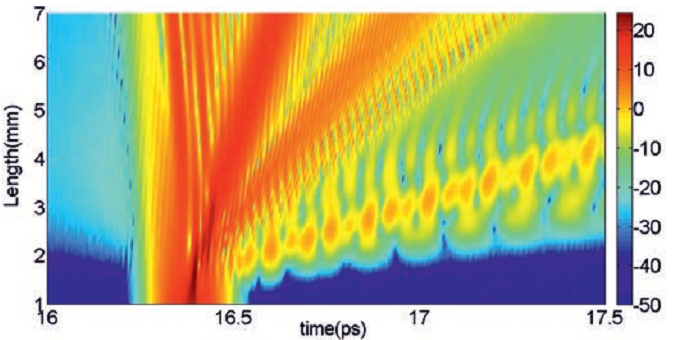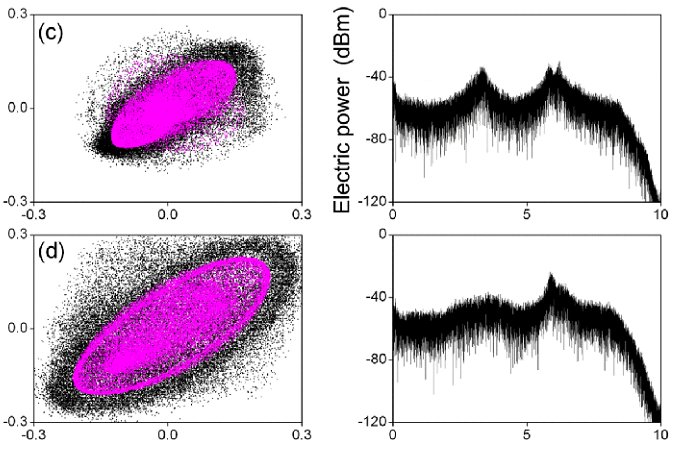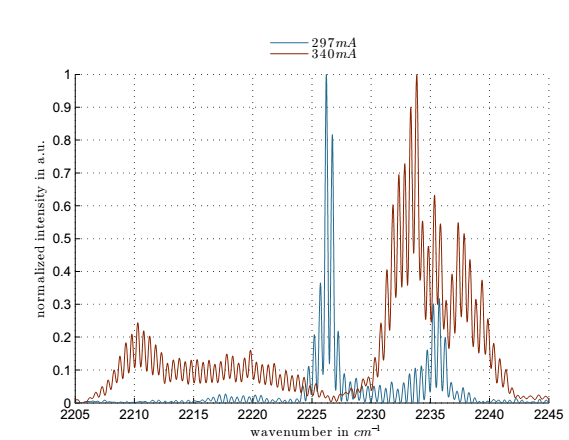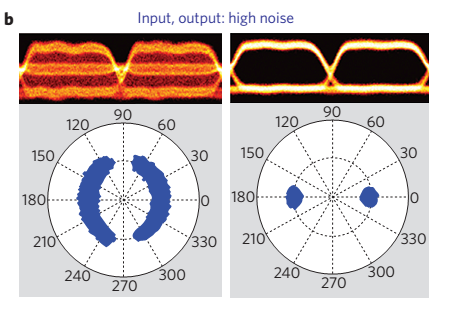Research
Below are my main research interests.

High speed optical communication systems and networks Photo
Optical fiber is the most broadband transmission medium, nevertheless it induces transmission impairments which degrade the transmitted data, especially when they propagate for many hundreds of km. The fiber transmission research is now focused on the impact of critical transmission impairments such as chromatic dispersion, nonlinearity and polarization mode dispersion on advanced modulation formats such as M-QAM, DMT, OFDM, etc. My specific interest in this area is the combination of optical and electronic mitigation techniques so as to extend the reach/baudrate whilst keeping the energy consumption and the complexity of the receiver within reasonable levels.

Nonlinear effects in photonic waveguides
Nonlinear effects in photonic waveguides are a very attractive subject as they exhibit both scientific and application-oriented publication record closely related to the previous field of interest since the majority of the aforementioned processing functions exploit nonlinear effects in fibers and other photonic waveguides. My research footprint in this field is the identification of fundamental properties of parametric processes in optical fibers and silicon waveguides such as conversion efficiency, noise properties and potential applications in telecom and biophotonics.

Optical Chaos and its applications in telecommunications
Chaos is an interesting scientific field with a plethora of applications. During the last decade I got involved in optical chaos research mostly focusing on chaos generators provided by lasers subjected to optical feedback and their synchronization properties. This research activity has recorded results related to cryptography applications of chaos synchronization in lasers. Different topologies relying on all-optical and electro-optical chaos generation have been studied and proposed for signal masking at the physical layer and the generation of truly random numbers for security applications.

Mid-infrared photonics and their applications in sensing
Laser spectrometers operating in the mid-infrared (MIR) provide an exciting prospect for trace gas sensing as they enable access to the fingerprint region where many molecules of both fundamental and applied interest have strong absorption cross-sections and high spectral selectivity. My specific interest is to transfer the obtained expertise regarding state of the art devices and optical signal processing in telecom wavelengths to these wavelengths and exploit it in order to attain better sources, more efficient spectroscopic devices and new components that could bridge the gap between near-infrared and mid-infrared.

All-optical signal processing for telecom and computing applications
The scientific society is convinced about the efficacy of photons to transmit and electrons to process. Despite the difficulty in manipulating photons, many research institutes put significant effort in providing sophisticated signal processing in the optical domain, a prospect with obvious advantages the low power consumption and the unlimited processing speed. My interest in this area is the utilization of all-optical signal processing in telecom applications and most-specifically in all-optical signal regeneration, all-optical logic and all-optical wavelength switching for next generation optical networks. This research activity was the main subject of my PhD. Very recently I got involved in the utilization of high speed analog photonic processors for the solution of time-consuming computation problems, such as real-time pattern recognition at ultra-high speeds leveraging the unique properties of photonic reservoir computing.